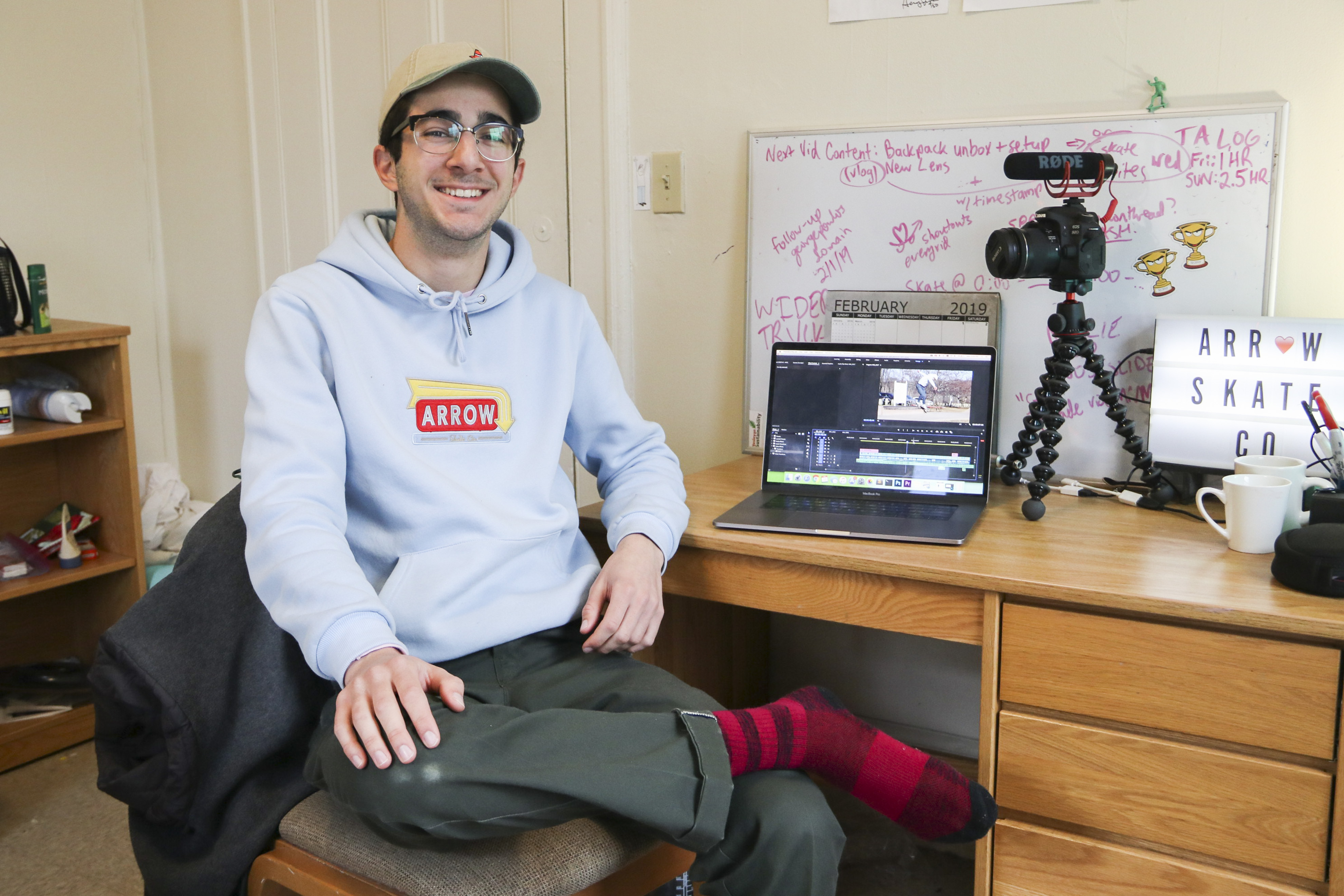
Unless he was whizzing by you on his skateboard, you wouldn’t notice George Poulos ’19 around campus. He’s pretty unassuming. If you did notice him, it’d probably be at Pi Café, where he likes to hang out at the counter by the windows with his long-time girlfriend, Nora Faye ’19.
If you looked a little closer, you’d probably see that he’s editing a video. Unless you’ve seen his videos, you wouldn’t know that he commands a growing online presence, one that he developed on YouTube during his time at Wesleyan. The channel, which currently has 85,000 subscribers, features videos of George talking about college life, vlogging (video blogging) his day-to-day activities, and skateboarding, of course. What started as a way for him to document his skateboarding progress has turned into a job he hopes to do full-time after graduation. With videos that have reached hundreds of thousands—even millions—of views and a popular skateboarding-themed merchandise line, George is hoping to leverage his growing audience to make a career out of YouTube.
At the beginning of this school year, George, a computer science major who grew up in New Jersey, thought he was the only one on campus doing YouTube seriously. There are students making things in every creative field, but George didn’t know of anyone making YouTube videos with any consistency—anyone who would identify as a “YouTuber.” Looking for a community of people who were doing similar work, George posted a question in the all-student Facebook group, WesAdmits 2022.
“Are there any current or aspiring ‘internet creatives’ out there?” he asked. “There’s a small group of us developing & it’s awesome, so hit me up so we can all be connected & maybe turn this into a club of some sorts.”
George’s post brought together a group of digital content creators from across campus. What came out of it was a group chat in which its handful of members, all Wesleyan students who make things online, could develop a community of people who are hoping to make it big on the internet. Now, it’s a community that members can tap to get advice on brainstorming and editing videos or set up video collaborations with other YouTubers. With followings ranging from a few hundred subscribers to a few hundred thousand, Wesleyan’s YouTubers now have a small community that they can all use to grow their followings and share in the challenges of being a college YouTuber.
Small Starts and Algorithm Anxiety
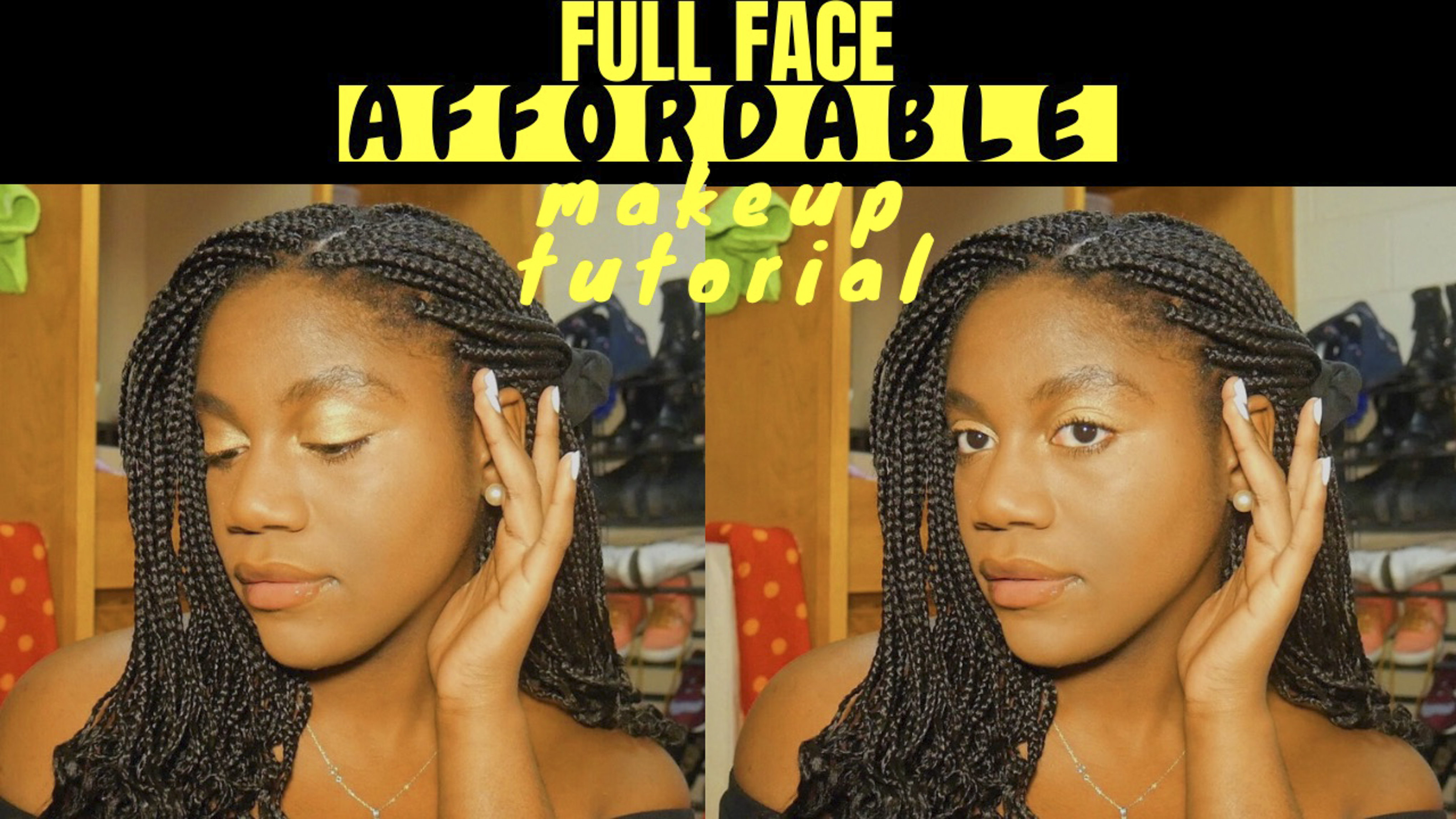
Matiza Sacotingo ’21 wants to inspire people. With one of the smallest followings of Wesleyan’s YouTubers, she’s just getting started. A pre-med student from Virginia, Matiza makes weekly motivational, lifestyle, and fashion videos for her 405 subscribers, a group she’s lovingly named the “#mateetsfam.” With her day-in-the-life videos, her audience gets an intimate view of her daily routine, watching her do her makeup, walk to class, work in the library, and hang out with friends. These videos intend to show college applicants and prospective Wesleyan students what life is like as an undergrad. In sit-down, almost-conversational videos, Matiza also talks about being a pre-med student and the stress that comes with it. She’s also filmed a dorm tour, a popular video for college YouTubers, and posts beauty and fashion videos that feature her reviewing low-cost makeup or showing off clothing she got at a nearby thrift store.
Matiza started posting regularly on YouTube in 2016, when she was just 16 years old. When she was admitted to Wesleyan, she turned to the site for videos about life on campus. She stumbled across George’s dorm tour videos in which he takes viewers around his various Wesleyan dorm rooms, talking about the details of each space and college life, in general. Living in Bennet his freshman year and then moving on to Foss 1, HiRise, and now a wood-frame house on Lawn Ave., George has documented his living arrangement every year for fans and prospective students. His freshman year tour now has over 35,000 views, and he’s said that multiple people have approached him saying that they watched his Wesleyan-related videos before coming to campus.
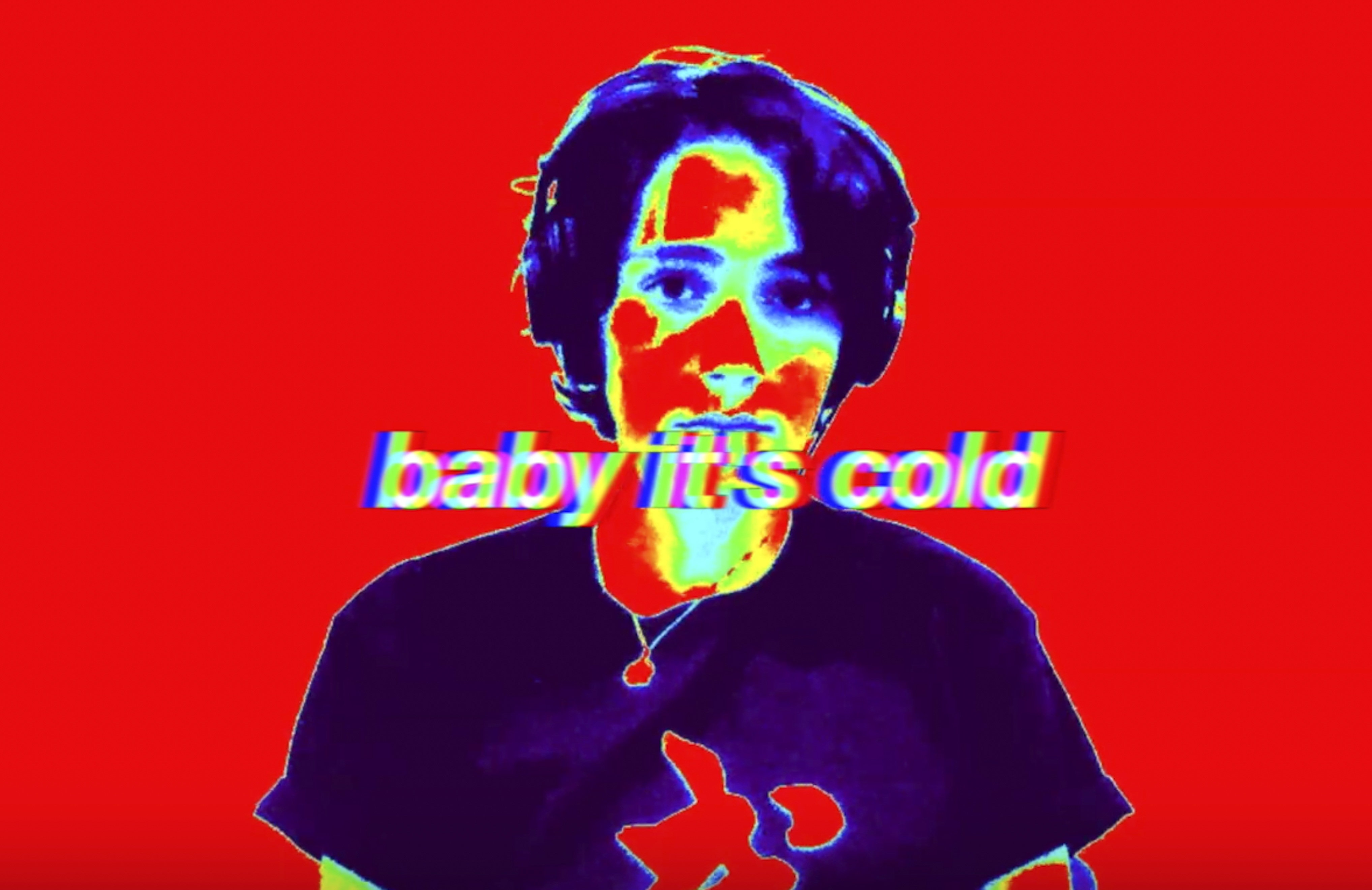
Iris Sackman ’22, known as Iris Olympia to her online followers, also saw George’s videos before coming to Wesleyan from her hometown just outside Seattle. She left a comment on one of his videos before getting to campus, and the two met up for dinner when school started in September. They immediately bonded over their shared interest in YouTube and began featuring each other in their videos. Similarly to Matiza, Iris makes videos about college life, but she also focuses on music, performing and uploading both covers and original music from her Butterfields single.
Iris came to Wesleyan with 1,500 subscribers on YouTube. She had been making videos across multiple channels for five years, dabbling in music, crafting, and Minecraft (a popular computer game) content. Now focusing on her music, Iris feels like YouTube is a perfect platform for expanding her audience and establishing a personal connection with viewers.
“I think that it’s much easier to grow an audience on YouTube than it is to grow an audience on Bandcamp or Soundcloud because you can create an instant pseudo-connection with your viewers, and I think the added visual interest makes it more engaging,” she said.
She wasn’t posting on a schedule when she came to campus, but after talking to George, she started posting twice a week. He emphasized to her the importance of having a schedule to hold yourself accountable to posting regularly and on time. She made a note on her whiteboard to post music videos on Mondays and lifestyle videos on Fridays and has stuck to it ever since. With this schedule, she’s seen both a growth in her audience—her channel now has over 2,000 subscribers—and an improvement in the quality of her content.
“A major turning point for me…is that I’m finally making content I’m proud to show other people,” Iris explained. “Before then, if someone was watching one of my videos, I’d be embarrassed about it because [the video] would just be some on-trend thing. More recently, since I started making videos I actually care about, it’s really different and it makes me happy to see people watching them.”
Something that both Matiza and Iris have learned about and struggled with as they’ve worked to grow their channels is the algorithm that YouTube uses to circulate the billions of videos that people watch on the site every day. This mysterious formula dictates what videos are recommended to users when they reach the site’s home page and how videos are suggested as viewers click from video to video. According to a Pew Research study published last November that tracked 696,468 videos on the site, only five percent of the videos recommended in the study had under 50,000 views. Popularity leads to more popularity, a reality which leaves Matiza and Iris hoping that one of their videos gets the attention necessary for YouTube to push it in front of viewers.
For Matiza, the average time it takes her to edit and post a video is six hours, but depending on how complicated her edits are, making a video can take upwards of 12 hours. On a week when she has exams in both biology and organic chemistry, YouTube has to take a back seat.
Iris spoke similarly about how long editing takes her and how it’s been challenging for her to stick to her schedule, especially when her growth has slowed in the past few months. When she’s making videos she enjoys, though, she doesn’t care how long it takes or how many people are watching.
“I’ve faced some ups and downs in terms of motivation for uploading when there’s really slow growth,” Iris said. “It feels like, ‘God, I’m working so hard and nothing’s happening.’ And at other times I don’t pay attention to it. Those are the better times because I’m just making good content that I’m proud of. I think since I do work really hard on my editing and just every part of my videos, I’m self-assured in the fact that my videos are high-quality, and it doesn’t matter to me how many people watch them.”
While getting the algorithm to notice their videos is out of their control, Matiza and Iris can still have some sway over how their content performs. Both work on eye-catching video titles, thumbnails (the images that appear next to video titles), and tags in the hopes that these elements will entice viewers to click on their posts. Iris also has a theory—or maybe a fear—she heard from George that has encouraged her to stick to her schedule.
“George instilled this fear [in me],” she said, laughing. “So there’s this guess that if you upload regularly, the algorithm will know what days you post and that you are a person who’s actually uploading regular content. Now there’s this fear that I can’t miss an upload or I’ll feel absolutely terrible. Over the past three months, there were only two weeks where I missed one of the uploads.”
Blowing Up and Cashing In
The two YouTubers at Wesleyan with the largest followings are George and Tommy Doyle ’21, a prospective economics major from Newington, Conn. George’s subscriber count pales in comparison to Tommy’s, which has almost reached 320,000. Tommy saw his viewership skyrocket in 2018, growing from 10,000 subscribers at the beginning of the year to 290,000 by the end of December.

While George’s skateboarding content may seem niche, Tommy’s is even more so, focusing on an online computer game called Roblox, which Tommy has played obsessively since 2009. He started posting YouTube videos on his “Linkmon99” channel in 2007, when YouTube was in its infancy, and now posts exclusively about this Lego-style building game. One of the game’s draws is the ability it gives players to collect items that they can then buy and sell using the game’s currency, Robux, which can then be traded in for real-life money. According to Tommy, he’s made $20,000 trading in his stash of Robux for real money.
Tommy’s YouTube success wasn’t an accident. Since he’s been playing Roblox for so long, he’s accumulated so much of the game’s collectible items and currency that he is the number-one Roblox player in the world. He was able to turn the fame he’s developed through the game into an audience on YouTube, an audience he guesses is made up mainly of pre-teens (YouTube doesn’t allow children under the age of 13 to make an account, so while YouTube tells him that his channel is most popular with viewers between the ages of 18 and 22, he guesses that the average age of his viewers is much lower.) What is convenient about Tommy’s channel is that he can make his videos in his dorm room, on his schedule, and make a sizable income doing so.
Both Tommy and George make money from advertisements that Google runs on YouTube videos through the company’s AdSense program, which pays creators to let it run ads on their content across all Google-owned sites. In 2018—the first year ads began running on Tommy’s videos—he made $31,000.
George makes between $900-1000 in ad revenue each month and has also turned to Instagram for extra income. Because he has over 14,000 followers on the app, companies have become interested in paying him to post pictures advertising their products. He’s posed with SunnyD and Doritos in photos for around $100 per post, deals he’s arranged through online platforms that connect creators with companies looking to advertise their products on social media.

Tommy and George have both their talents as creators and YouTube’s algorithm to thank for their success. George spoke about the algorithm as both a blessing and a curse for his channel. One of his videos, “Why Skateboarders Hate Scooters,” which he posted in April 2016, was extremely popular for some reason that George still doesn’t understand. He thinks that this video, which currently has 3.6 million views, jumpstarted his channel and got him noticed by YouTube’s algorithm. Even though he now has a better understanding of what content YouTube promotes, he thinks catering solely to what the site wants to recommend could hurt the quality of your content in the long-run.
“It’s kind of freaky that you have to cater to this algorithm,” George said. “I got very lucky with the one video that blew up when I was much smaller, that was freshman year…. I’m kind of grateful for it, but it goes both ways: if you really learn the algorithm, you can post crap content, and it’ll do well just because it caters to the algorithm.”
Since YouTubers make ad revenue in proportion to how many views their videos get, George and Tommy depend on their videos getting recommended on the site for them to make any meaningful income. Tommy said that if a video he posts only gets 20-30,000 views, the most he could make from it is $50. If he has a video that does really well, though, he can make $500 in a day.
While both have seen material gains from their content, they understand that the fickle nature of the internet—and the niche communities they are a part of—make staying in school a priority. Tommy spoke about seeing some YouTubers who gain fame on the platform drop out of school to pursue their channels full-time.
“I think a lot of people don’t future-proof themselves on YouTube by getting really specific to something, and it might be a craze for a bit but then it just dies,” Tommy said. “There are channels with over 1,000,000 subscribers that get 3,000 views [on their videos]…. That could happen if you’re not careful.”
For the Love of Filmmaking
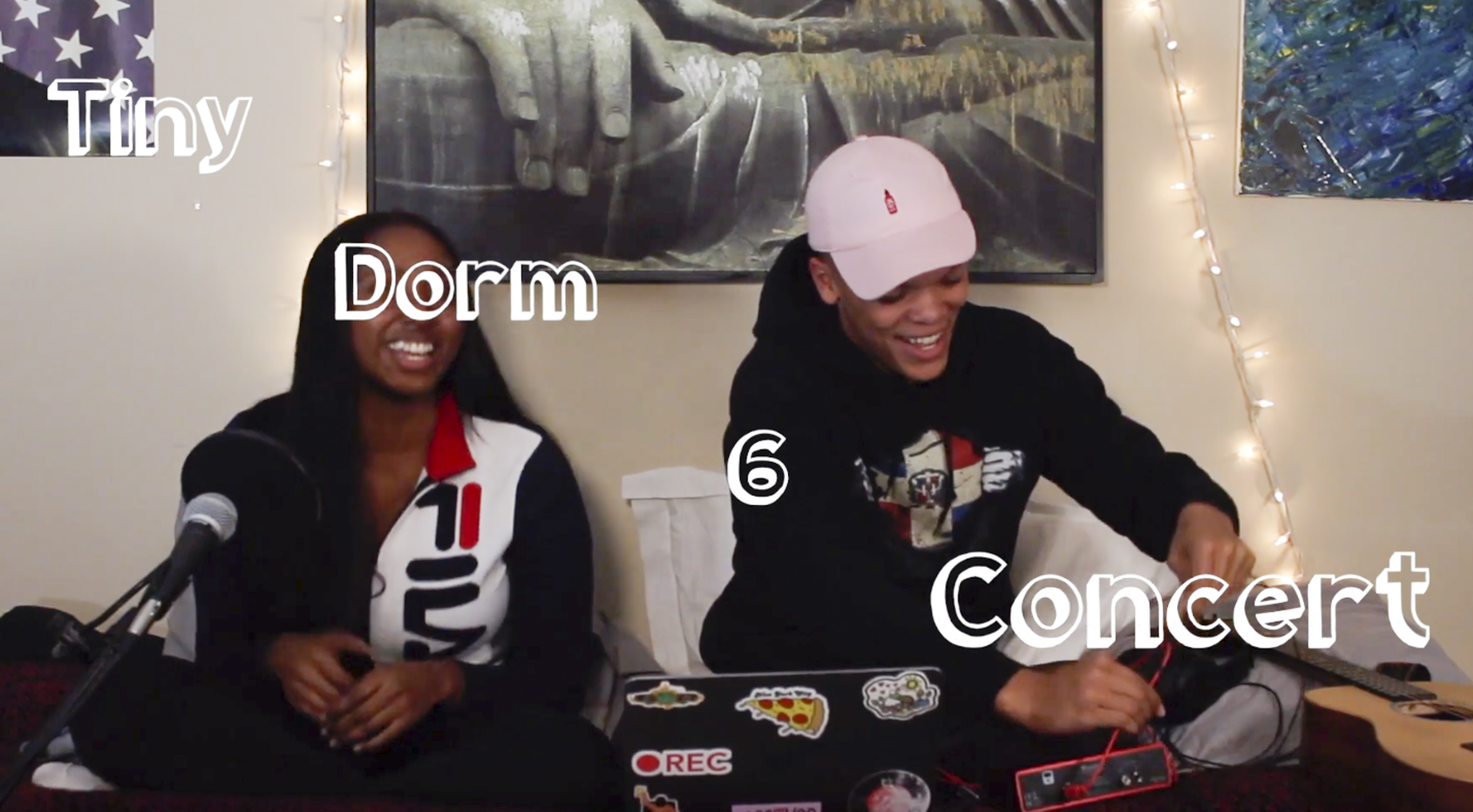
Another YouTuber on campus started with just a camera and a love for making movies. Myles Johnson ’22, a prospective film major from Brooklyn, was inspired to make videos of campus musicians playing small concerts in their dorm rooms after watching NPR’s “Tiny Desk Concert” videos. He calls the series of videos he produces “Tiny Dorm Concerts” after the popular NPR series. For him, his work on YouTube is less about the views or money and more about broadcasting the talents of Wesleyan students and constantly pushing himself to make videos.
His set-up is simple: one camera, one mic, and a basic light kit. He reaches out to campus musicians—or they reach out to him—and arranges a date to shoot a 20-30-minute video. Right now, he’s working on one video per week, as well as short films that he plans to shoot and edit continuously.
As a freshman, Myles said that making things with and for people from different class years and campus communities has gotten him around Wesleyan in a special way.
“People marked me as ‘that guy’ a little bit, which is good because I want people to know I’m a prospective cinematographer on campus,” Myles said. “As a freshman, it shows, yeah, we’re here too. We’re doing [things]. We’re not just wide-eyed…. It’s really helped me adjust because it gives me a solid schedule to do things with other students.”
What Myles values most about YouTube is that the platform is free for all users. With this very low barrier to entry, anyone who wants to create content—from Tommy, with his hundreds of thousands of subscribers, to Myles, with his 145—can.
Consistency is Key
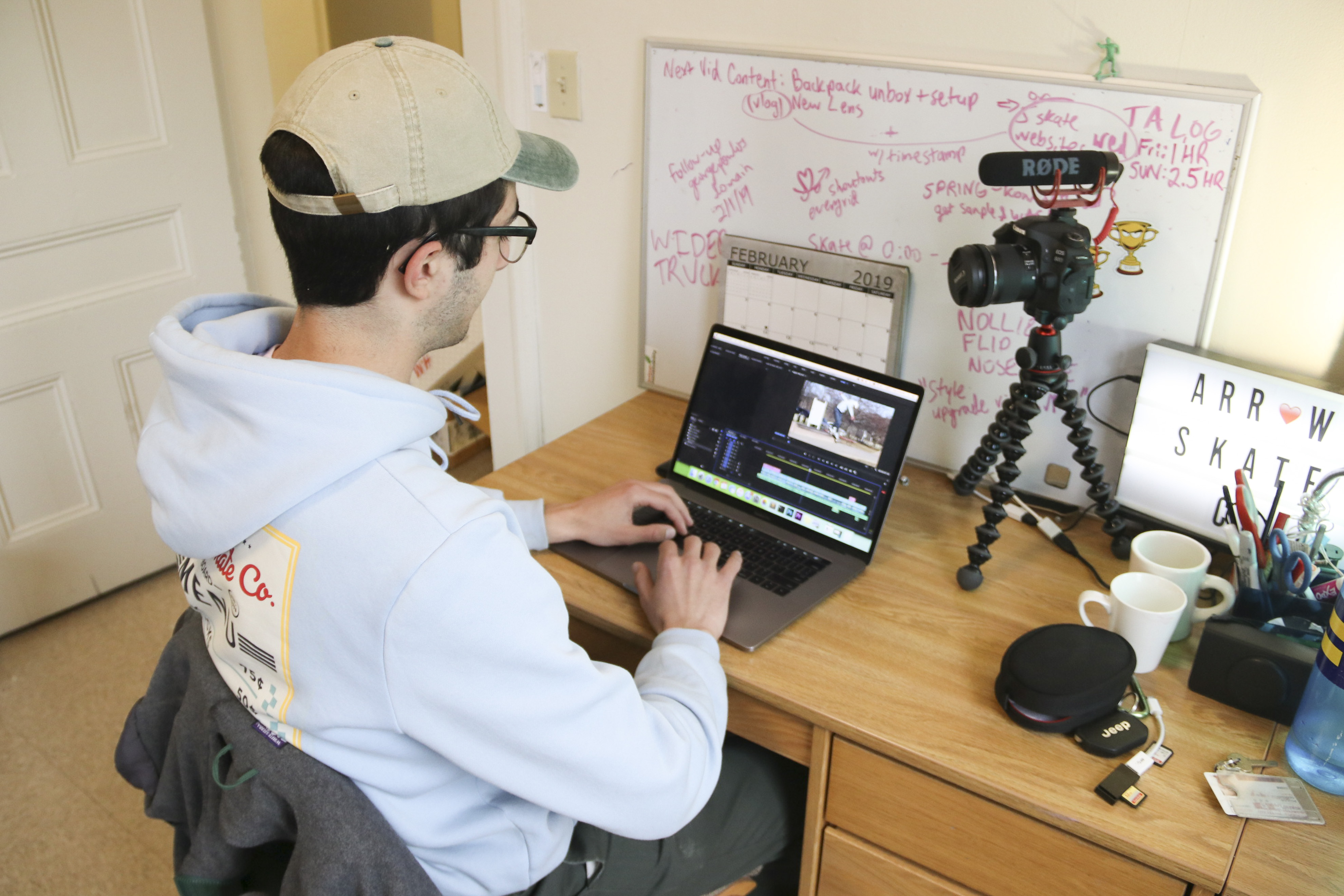
As his channel has grown, George has seen what constantly producing content—on YouTube, Instagram, Twitter, and Snapchat—can do to attract viewers and keep them returning to his accounts. Recognizing the potential for growth in his channel and the way he can make money off its expansion, George plans on taking one year after graduation to figure out whether doing YouTube full-time could be sustainable.
“Now that I’m going to actually do this full-time—my plan is to take a full year after school to see if this is realistic—I guess now my issue is whether I can make enough money to actually move out,” he explained. “So that’s a financial challenge. It’s a very constant hustle sort of thing, and you’ve got to put a lot of energy into it.”
This hustle, the constant pressure to produce videos, pictures, and posts, is shared by all the student YouTubers in this newly formed community. While Iris’ anxieties about staying on schedule may seem irrational, the uncertainty of YouTube’s all-powerful algorithm and what it can do to boost or doom your content is a harsh reality, even for Tommy, who still cannot predict when his videos will perform well and when they’ll flop.
For both smaller YouTubers like Matiza and Iris and larger creators like George and Tommy, all they can do on this extremely uncertain and competitive platform is consistently create with the hopes that their next video is the one that boosts them into the limitless system of recommendations and clicks that make a piece of content go viral.
“I think that consistency is the absolute bottom line,” Iris said. “If you’re being consistent, something’s going to happen for you. Right now, I’m going off this rule of don’t expect an outcome from something if you’ve been doing something consistently for six months. I’ve been doing it consistently for four months, so I’m just waiting to get there.”
For Myles, though, it’s all about the filmmaking and the music, and he’s just happy to have a space where he can post his work.
“I don’t see it blowing up or anything…. I want it more just localized. For me, it’s more for the musicians than anything else. I always wanted to be able to publicize my stuff, so I’m like, ‘Let’s help other people out.’”
William Halliday can be reached at whalliday@wesleyan.edu.


Leave a Reply